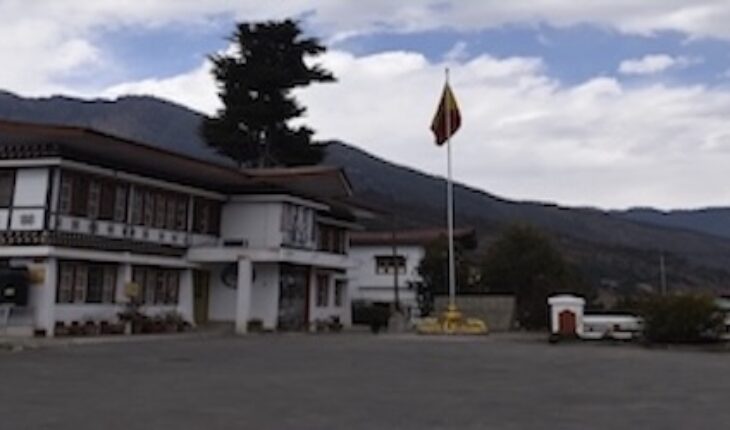
Educators voice mounting pressures and call for reforms in recruitment, retention, and working conditions
RENUKA RAI
Thimphu
Bhutan’s education sector is in the grip of a worsening teacher shortage, with over 1,100 vacant positions across the country’s schools.
The Ministry of Education and Skills Development (MoESD) has launched a nationwide assessment to identify inefficiencies in teacher deployment, but findings indicate a crisis that runs deeper than numbers—a systemic problem threatening the foundation of the country’s future.
While the ministry’s assessment highlights glaring imbalances—schools with too many teachers and few students on one end, and overcrowded classrooms with too few teachers on the other—the real concern is the sharp and persistent shortfall in Science, Technology, Engineering, and Mathematics (STEM) educators.
These gaps, experts warn, could have long-term implications for national development.
“Each teacher is required to handle 26 class periods per week, and many of us are teaching classes with around 33 students,” said Sonam Lhamo, a teacher at Sengdhyen Lower Secondary School in Dorokha. “It’s overwhelming. The large student-to-teacher ratio makes it nearly impossible to give students the individual attention they deserve.”
Sonam described a work environment where teachers are expected to be more than instructors—they are mentors, organizers, and administrators.
“We are responsible for co-curricular programs like scouting, we have to conduct mentoring sessions, and we keep detailed profiles of each student. It’s no longer just about teaching—it’s about supporting every aspect of a student’s development,” Sonam Lhamo said.
The same concerns echo from other parts of the country. At Darla Higher Secondary School, teacher Mechi Dema said the increasing workload leaves little time for even basic rest between periods.
“Teacher shortage is everywhere these days,” Mechi said. “On top of full teaching schedules with a variety of subjects each day, we’re also expected to manage multiple school activities. It can get overwhelming.”
She emphasized that teacher retention requires more than just recruitment. “We need support staff to handle non-academic responsibilities. Facilities must be improved, and workloads reduced. That’s how we’ll keep more teachers in the profession.”
The recruitment process itself is a source of frustration for many school leaders and policymakers. Delays in appointments—largely dictated by the Royal Civil Service Commission (RCSC)—leave schools stranded without adequate staff, even after teachers have been identified and selected.
To temporarily address the STEM teacher gap, Bhutan has increasingly turned to hiring foreign teachers, especially from India. However, this has raised concerns about sustainability and dependency.
“We’ve conducted multiple rounds of recruitment, and we’re still struggling to fill these critical positions,” said a ministry official. “The long-term solution must come from within—by producing and retaining local talent in STEM education.”
One of the ministry’s key proposals is the establishment of a National Teaching Service, a body that would give the MoESD greater flexibility in recruiting teachers outside the constraints of the current civil service system.
“If implemented effectively, the National Teaching Service could be a game-changer,” said an education expert based in Thimphu. “It would allow for quicker hiring, targeted recruitment, and better alignment with school-level needs.”
However, educationists caution that structural reform must be coupled with incentives to attract and retain talent in the sector.
The voices of teachers like Pramila, a teacher from Samtse, reveal how the shortage is affecting morale. “We’re doing our best, but many of us are burning out. What we need is continuous professional development and more recognition for the work we do.”
She added that appreciation—even in simple forms—makes a difference. “When we’re acknowledged for our efforts, it boosts our morale. Many teachers stay not because the job is easy, but because we care deeply about our students.”
Despite the challenges, the motivation for many educators remains rooted in their love for the profession. “What drives me is the joy of making a difference,” said Sonam Lhamo. “No matter how hard it gets, I refuse to compromise on the quality of education I give my students.”
Mechi Dema echoed this sentiment. “Interacting with eager learners keeps me going. It gives me a deep sense of satisfaction.”
The government’s plan to consolidate under-enrolled extended classrooms with nearby schools may optimize resources, but experts stress that consolidation alone cannot solve the crisis.
“Teacher shortages are not just logistical issues,” said an official from the MoESD. “They reflect deeper structural challenges—limited professional incentives, outdated hiring practices, and poor working conditions.”
Increasing salaries and offering better career development paths could be key solutions. While some, like Mechi Dema, believe the current pay is adequate, she agrees that “better rewards can serve as strong motivation at times.”
If urgent measures are not taken, the long-term effects could be devastating. Students in under-resourced schools may suffer from poor academic performance, limiting their opportunities and the nation’s capacity to build a skilled, knowledge-based workforce.
“Quality education is the bedrock of national progress,” said Sonam. “We cannot let this crisis deepen. This is not just an administrative issue—it is a national priority.”





